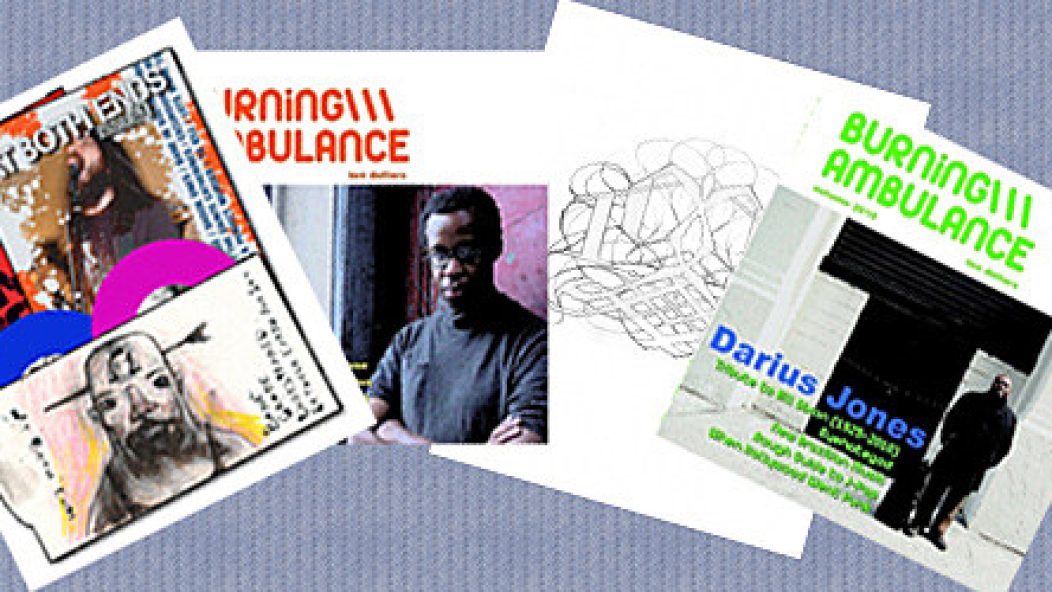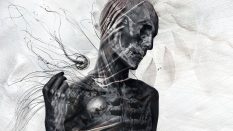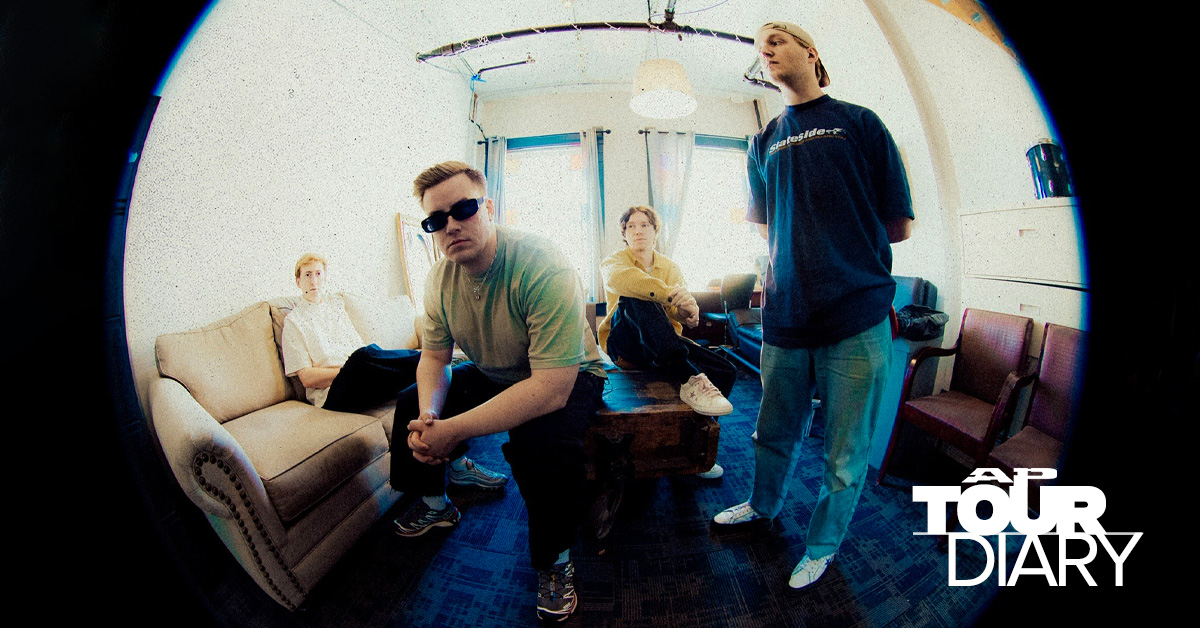
The Read Chord: Zine-O-Mania
The Internet has diminished the prevalence of physical zines as a self-publishing tool. Its advantages are obvious: it’s faster and cheaper. But physical zines have a charm that the Internet lacks; in the right hands (and until digital displays catch up with paper in visual appeal), they can become valuable artifacts. Hence the hot anticipation for Bazillion Points’ Slayer mag compilation and the popular six-issue run of Annick Giroux’ Morbid Tales.
I don’t buy zines or other physical media anymore for myself. (I do buy them to give away to others, often you guys; in fact, I’m giving away one of the zines reviewed below.) My life situation (itinerant, unsettled) makes collecting stuff undesirable. But I still read zines that people send me, even if they tend to be about hardcore punk. That culture seems to suit amateur, handmade efforts more than metal, whose zines often resemble actual magazines. Physical zines teach me things I can apply to this online one. Here are three that engaged me over this past year. (Ironically, I requested and read the last two as PDFs due to expediency and environmental concerns.)
. . .
At Both Ends #9 & #10
These are the final two issues of this hardcore zine, packaged as a double issue along with a double 7″ featuring exclusive tracks by Bane, Grade, Unrestrained, and Between Earth and Sky. As you can imagine, it’s quite a production. The zine is perfect-bound (i.e., like National Geographic, held together with glue, not staples) and printed on high-quality paper. Its layout is the most impressive I’ve ever seen in any music magazine. Creative, colorful graphics fill every page. This zine is a master class in layouts.
But I don’t learn as much by actually reading it. The content is up and down, with writing that’s functional at best and often typo-ridden. Both issues have extensive review sections that are basically worthless. I’m not interested in 50-word blurbs about hardcore records that are several years old (this issue took a while to put together), many of which are evidently mediocre. If you’re reviewing large numbers of records, you need a high publishing frequency (e.g., monthly). Otherwise, you’re reduced to brief blurbs that are quickly outdated. I’d rather read about one significant record than 50 insignificant ones.
Still, I got a lot from this zine. It’s interesting how similar hardcore scene politics are to those in metal (and every other scene I’ve observed) – except metal is the bugaboo, not the other way around. In a generous parting gesture, the zine has features on how to put something like it together: how to assemble a magazine (software and print shop tips, etc.), how vinyl mastering works. I’m hoping to apply some of that knowledge myself – see below.
. . .
Mirror Me #1
Mirror Me is a collaboration between writer Brandon Stosuy and artist Kai Althoff, with contributions by a bunch of other writers, artists, and musicians. It’s black & white, 104 pages, and quite strange. Unlike the typical zine, which advertises its subject matter up front (“featuring interviews with X, Y, and Z!”), it dives, without any preamble, straight into its content – photographs, drawings, newspaper clippings, poems. They are fragmented, seemingly disjointed at times and seemingly related at others.
As Stosuy explains in this interview, the zine is intentionally mysterious. Its energy comes not from external subject matter, but from within. It does reveal reference points like black metal album covers, but they are presented as private totems. Such a personal approach is refreshingly low-key, but almost too much so. Without that interview, I’d pretty much be lost within the zine. Still, it has an atmosphere about it, the “intangible dark misery that is black metal” described here. If I had read the paper version, I’m sure that atmosphere would have been even stronger.
. . .
Burning Ambulance #1 & #2
If Invisible Oranges mirrored my personal tendencies, it would look something like Burning Ambulance. In real life, I’m interested in much more than metal, and a publication that moves from jazz to Eyehategod (a feature written by our own Kim Kelly) to Brazilian music to J-pop makes complete sense to me. But it probably wouldn’t to most other people, which makes Burning Ambulance, edited by Phil Freeman, so strange and brave.
It’s hard enough to run a magazine that’s devoted to one thing – see the demise of many metal magazines recently – much less one whose premise is that the reader should trust the quality of the writing, no matter the subject matter. I wish I had this luxury. If I post about Metallica, that post will get more hits than a post about, say, Valdur, even if my writing about Valdur is better than my writing about Metallica. That’s the reality of an Internet reading environment in which people cherry-pick material out of RSS feeds based on titles. I loathe the tyranny and superficiality of subject matter-based reading – I would rather read good writing about a seemingly uninteresting subject (because the good writing will make it interesting) than bad writing about an interesting subject (which is why I don’t read most writing about metal) – but I guess that’s how people work.
So it’s a joy to see Freeman & co. pull off such a quixotic endeavor. They don’t do it perfectly; Freeman’s J-pop feature is the worst article so far because it succumbs to the bite-sized, blog-type presentation that his magazine explicitly tries to avoid. If your aim is to provide substantive reading, you need a narrative, something that will carry a reader through its length. Brief blurbs on various J-pop singers are easy to digest, but they reek of the “Your guide to XYZ” articles with which blogs condescend to readers. Don’t tell people what to think – show them.
On the other hand, Freeman’s feature on Matthew Shipp is the highlight of the series thus far. This is because it pulls no punches. Music magazines rarely publish features that simultaneously criticize and praise their subjects. That’s basically unheard of in metal. (One example comes to mind, J. Bennett’s Decibel feature on Danzig. Cover story, multi-page spread – and Bennett wasn’t afraid to paint Danzig as a douchebag (although Danzig did most of the painting himself).) Features in music magazines are usually just glorified bios or advertisements. That’s what happens in a revenue-from-advertising environment. If you publish hit pieces on bands, their labels won’t give you money. So you soft-pedal things. Freeman doesn’t, and paints a fascinatingly complete picture of Shipp.
His cohorts are skilled, too. They have me wanting to check out Bill Dixon, Henry Threadgill, Hollywood punk movies, and pretty much whatever they want me to check out. (Sorry, Phil, I’m still not interested in J-pop.) One writer, Phil Nugent, was even so good that I looked him up online. I can’t recall the last time that happened. Burning Ambulance won’t appeal to everyone – in fact, it’ll probably appeal to hardly anyone – but to folks who’d rather take down than put up mental walls, it’ll be a beautiful thing.
. . .
INVISIBLE ORANGES TO GO PRINT
After years of requests, we’re thinking of doing a print edition of Invisible Oranges. It won’t be too frequent – quarterly at most (unless some major cash infusion comes along).
What would you like to see in it?
Please leave your suggestions and ideas in the comments box by midnight PST, Sunday, December 5. I’ll pick one of you commentators randomly and give my At Both Ends #9 & #10 double issue/double 7″ vinyl package to you. International folks are welcome. If you’re even remotely interested in hardcore, you will want this.
. . .
The Read Chord is Invisible Oranges’ column about reading. The material may or may not be about metal, but will be of interest to fans of metal. Writers on staff and guests will pen the column. Readers can also take a whack at it. (For proposals, email invisibleoranges at gmail dot com).
. . .








![Bad Omens announce new album CONCRETE JUNGLE [THE OST]](https://www.altpress.com/wp-content/uploads/2024/04/17/BadOmens-CROP_2024_JW_0619_Final_V1.jpg)


